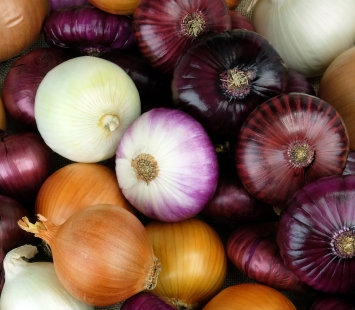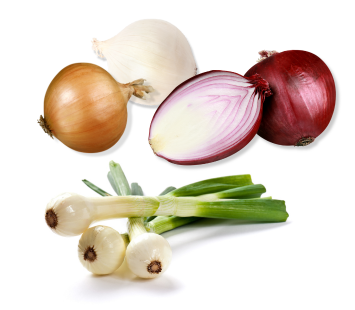Onions
Description
A mix of white, red, yellow, and brown colors with an elongated, round, or flat shape. Onions are commonly eaten after their skins have dried out and become papery, which allows them to be stored for long periods, but they can also be consumed after their freshly harvested.
Some common onion varieties widely found in grocery stores include:
- White Onions – Dried white skins and flesh with a stronger flavor.
- Yellow Onions – Dried, light brown, yellowy skin and more mild flavor.
- Red Onions – Dried, red or purple skin with a white and purple flesh and sweeter flavor.
More great varieties to look out for at farmers’ markets:
- Spring Onions – Fresh onions with a defined bulb that have not gone through the drying process, and so usually still have their green tops intact and soft, white skin. They have a sweeter, milder flavor compared to dried onions, but stronger than scallions/green onions.
How to Prep
UNCOOKED: Halve or quarter, then thinly slice to add to salads, sandwiches, or burgers.
SAUTÉ: Peel the onion and chop into small pieces. Combine with melted butter in large pan over high heat for 4 minutes until brown, then cover and reduce to medium-low for 4-5 minutes until tender.
ROAST: Preheat the oven to 400 °F. Peel onions and cut into chunks, drizzle with olive oil, and roast for 25-30 minutes.
Storage
Store dried onions in a cool, dark place, like in a cabinet or on a pantry shelf. Never store dried onions together with potatoes–they will both release gasses that cause the other to go bad faster.
Store Spring Onions in the refrigerator for up to a week.


